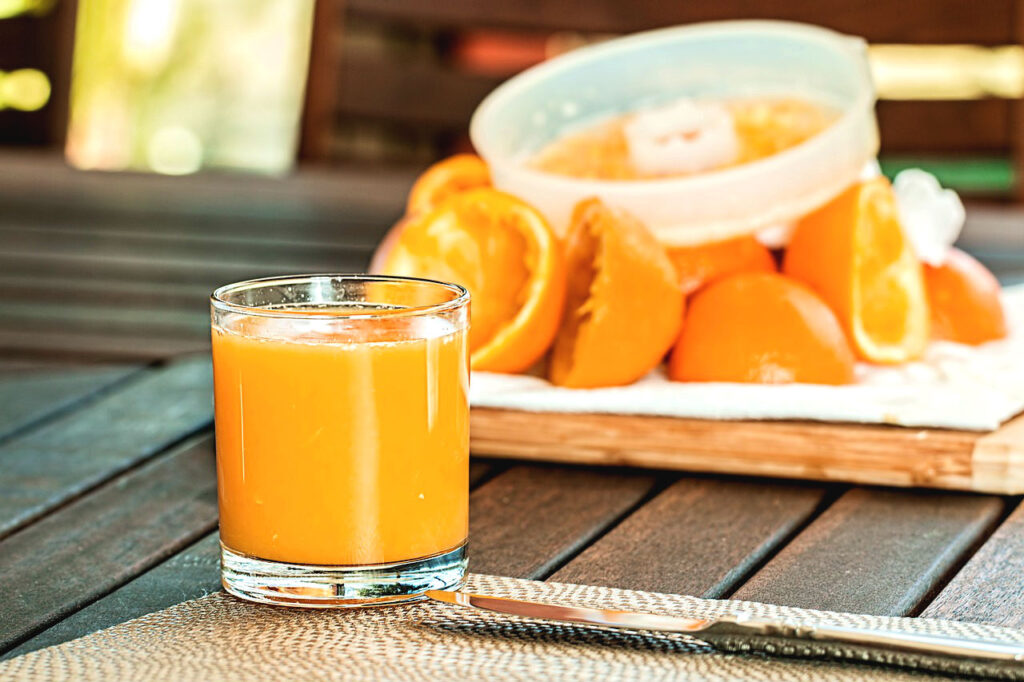Juicing to Lose Weight: Slimming Down Pound by Pound
Juicing to lose weight isn’t the effortless shortcut many people imagine. Like any change in your eating habits, replacing your usual foods with fresh juice takes consistency, planning, and discipline.
- Why Juicing Can Help
- 1. How much weight do you need to lose?
- 2. Are you choosing a short-term or long-term approach?
- 3. Will this diet drastically change your normal eating habits?
- 4. Will you actually like the juices you make?
- 5. Does the diet force your body into starvation mode?
- 6. How will you maintain weight loss once the diet ends?
- 7. Do you prefer fast results with more discomfort or gradual loss with more comfort?
- Does juicing help you lose weight faster than eating whole produce?
- What fruits and vegetables work best for weight loss?
- How much juice should you drink per day?
- Is blending or juicing better for weight loss?
- Can you lose weight on a juice-only diet?
- What are the downsides of juicing for weight loss?
The key is choosing ingredients that support weight loss and provide the vitamins, minerals, and nutrients your body needs to function at its best.
Most of us have heard about juicing through commercials, flashy machines, or online trends. But beyond the hype, many people do experience real progress when juicing is used as a supplement to an overall weight-loss plan, not as the entire plan.
Why Juicing Can Help
When done properly, juicing offers a few meaningful advantages:
- Fresh juices are easy to digest
- They deliver nutrients quickly
- They can help reduce cravings
- They give your body a break from heavy, processed foods
And unlike restrictive diets that leave you feeling depleted, juicing does not have to lead to malnutrition or hunger. When balanced well, fresh juice can complement healthy eating and help you slim down without feeling miserable.
Dieting and Juicing: What to Consider
Before starting any weight-loss plan that includes juicing, it helps to think through a few basics. These questions guide your goals, comfort level, and long-term success.
1. How much weight do you need to lose?
Your target matters.
If you only need to lose a few pounds, juicing can help reduce cravings and trim calories quickly. If you need to lose 20 pounds or more, you’ll need a steady routine and realistic expectations. Fresh juice adds vitamins, minerals, and phytonutrients that support overall health along the way.
2. Are you choosing a short-term or long-term approach?
Short-term juicing offers fast results but usually comes with more discomfort. Juice-only plans lack protein and fiber and can leave you tired or hungry. Long-term juicing is easier. You simply replace one or two meals or snacks with fresh juice while keeping your normal meals healthy and portion-controlled. Slow and steady plans are easier to stick with and just as effective over time.
3. Will this diet drastically change your normal eating habits?
Juicing is flexible. You can go all-in for rapid loss or use juice as a supplement for a gentler transition. The more meals you replace, the bigger the shift in your routine. The fewer meals you replace, the more comfortable the process will be.
4. Will you actually like the juices you make?
Taste matters.
If your juice isn’t enjoyable, you won’t follow through. You can adjust flavors easily with lemon, ginger, cinnamon, mint, rosemary, or similar ingredients. If you crave sweetness, berries are fine in moderation. Avoid honey since it adds unnecessary sugar.
5. Does the diet force your body into starvation mode?
It doesn’t have to. Juicing only becomes extreme if you eliminate real food entirely. You can lose weight without starving by pairing juices with balanced meals. Think of juicing as a tool that supports weight loss, not a harsh “only juice” regimen.
6. How will you maintain weight loss once the diet ends?
Maintenance is the part that many people ignore.
After a strict plan ends, weight often returns quickly. Juicing can help prevent regain by substituting fresh juice for snacks, cutting cravings, and keeping your overall calorie intake reasonable. A long-term plan prevents the rebound effect.
7. Do you prefer fast results with more discomfort or gradual loss with more comfort?
This is a personal choice.
Fast loss usually means more hunger and lower energy. Gradual loss is easier to sustain and far more realistic for most people. Juicing works for either style. Pick the option you’ll actually stick with.
Closing Thoughts
Dieting is simple in theory, but almost never easy in practice. Changing long-established habits takes discipline, discomfort, and consistency. Juicing can make the process easier, though. It helps curb cravings, gives you a low-calorie nutrient boost, and offers countless flavor variations so you don’t get bored.
If you struggle to eat enough fruits and vegetables, juicing fills the gap quickly. And if you’re aiming to lose weight, it can be a helpful tool alongside a structured diet. The more variety you build into your juicing routine, the easier it becomes to stick with your goals.
Everyone approaches healthy eating differently. In our home, we shoot for whole food plant-based meals during the week and save meat for weekends or special occasions. We also prefer smoothies over juicing because of the added fiber, but juicing can be a great stepping-stone for people transitioning into healthier eating patterns.
Use it as a tool, not a crutch, and you’ll see steady improvements.
Juicing to Lose Weight: FAQs
Does juicing help you lose weight faster than eating whole produce?
Not really. Juicing removes the fiber that keeps you full. You’ll absorb nutrients quickly, but hunger comes back sooner. Juicing works best alongside a balanced diet, not as the entire plan.
What fruits and vegetables work best for weight loss?
Leafy greens like kale, spinach, chard, and celery are excellent. For fruit, stick with lower-sugar options such as berries, grapefruit, lemon, and lime.
How much juice should you drink per day?
For weight loss, 1–2 cups of mostly vegetable juice is enough. More than that adds sugar and calories you don’t need. Smoothies are usually more filling because they keep the fiber intact.
Is blending or juicing better for weight loss?
Blending is better for staying full. Juicing delivers fast nutrients but won’t keep you satisfied as long.
Can you lose weight on a juice-only diet?
You may lose weight temporarily, but it won’t last. Juice-only diets lack protein and fiber and often lead to rapid regain. Juicing should support a well-rounded diet rather than replace it.
What are the downsides of juicing for weight loss?
Without fiber, juices can spike blood sugar. Juice-only diets are low in protein and hard to maintain over time. Whole foods still need to be your foundation if you want sustainable results.


